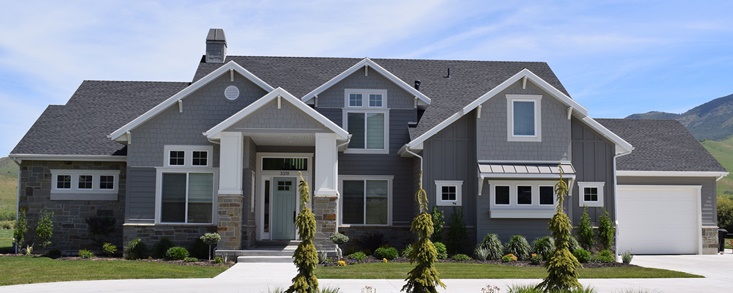WHAT DEFINES A CRAFTSMAN HOME STYLE?
The craftsman-style home has been around a long time and continues to be one of the most common custom home styles in the United States. This style is practical, beautiful, and has proved through the test of time that this style isn't leaving any time soon. In this article, we will explain what home characteristics define the craftsman style.
Craftsman style history
The craftsman style was actually developed by William Morris in late 1800's Great Britain. William wanted to create a custom home style that even the "common man" could afford, while still building with original architecture and custom furnishings that had only be available for the high-upper class up to that point. Mass-production was the current trend at that time, but this new movement allowed the local artisans to handcraft homes and products.
This movement quickly grew in Great Britian and then sparked the United States market around the turn of the century. Gustav Stickley was a furnature maker in the US who became enamored by this movement. Gustav Stickley began to publish blueprints in his magazine of these home styles that introduced "serious architecture" to the masses. This magazine was titled The Craftsman - hence the name of this style. Architects Charles Sumner Greene and Henry Mather Greene, two Californian brothers, were also early practitioners of the craftsman style and helped spark this movement in America.
The craftsman style has proven to be timeless, as many of the original defining characteristics of the craftsman style are still popular and prevalent today.
What is craftsman style?
The craftsman style has many common identifying features in addition to every home's unique features:
Low-pitched roofs. Craftsman-style roofs typically are low-pitched compared to other styles, although this varies greatly by the location of the home. The portion of the roof that meets or overhangs the exterior walls of the home are called eaves. Craftsman homes normally have wide eaves that stick out farther than most other home styles, and the rafters remain exposed under the eaves.
Covered front porch. An exterior feature of the craftsman home that is very popular is to have a wide porch. Some porches will wrap around the whole front of the home, whereas some are smaller. These porches are covered and have heavy porch columns often set on brick or stone piers.
Prominent fireplace. In the heart of almost every craftsman-style home, you will find a grand fireplace. These are common in the central living area and are a design focal point of the home. The fireplace often has built-in features or large windows to each side.
Other common features can include crown molding, lots of material finishes (wood and brick are most common), exposed beams, multiple-pane windows, and built-in cabinetry.
Within the craftsman style, there are different variations. For example, the Prarie style often has the most natural appearance, have the flattest roofs, and home design and furnashing styles vary from room to room. Bungalow style and craftsman style are very comparable and sometimes considered the same - the bungalow/craftsman style is typically one-and-a-half stories, uses a lot of brick, and has the simplist design. Center Point Construction's craftsman style experience most commonly falls under the Four-Square style, which has a more rectangular shape, two-stories, simple siding materials, and a large porch that does not wrap around the whole front of the home.
As mentioned before, the purpose of the the craftsman-style home was to get away from mass production of homes, so every home build should be unique and have the personal flare that excites you.
Center Point Construction sample work
Center Point Construction has had many opportunities to build custom homes with a craftsman style architecture and interior design. Below we have inclded a series of different pictures and different homes that we have built. If you would like to see additional examples or see additional project information, look at our Residential portfolios, or give us a call at 801-845-1100.
Want to learn more?
The craftsman home continues to grow in popularity and there are more and more resources that can help you learn more and develop your own preferences within the craftsman styles.
Below is a list of several additional blog posts that include additional helpful information and more details about the craftsman style:
Freshome
House Beautiful
Hunker
Clever
Pennsylvania Architecural Field Guide
We have also created a craftsman style pinterest board that you can explore and re-pin to your own home design boards. If you are considering building a new home, we would love to work with you to design your dream craftsman-styled dream home. Give us a call and we can work together to turn your vision into a reality!






